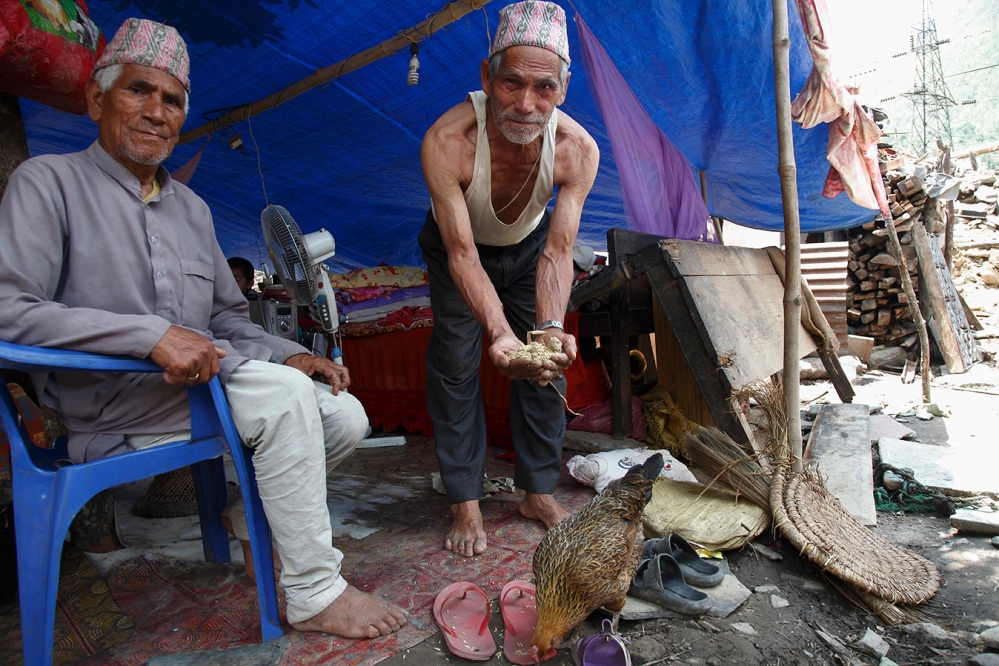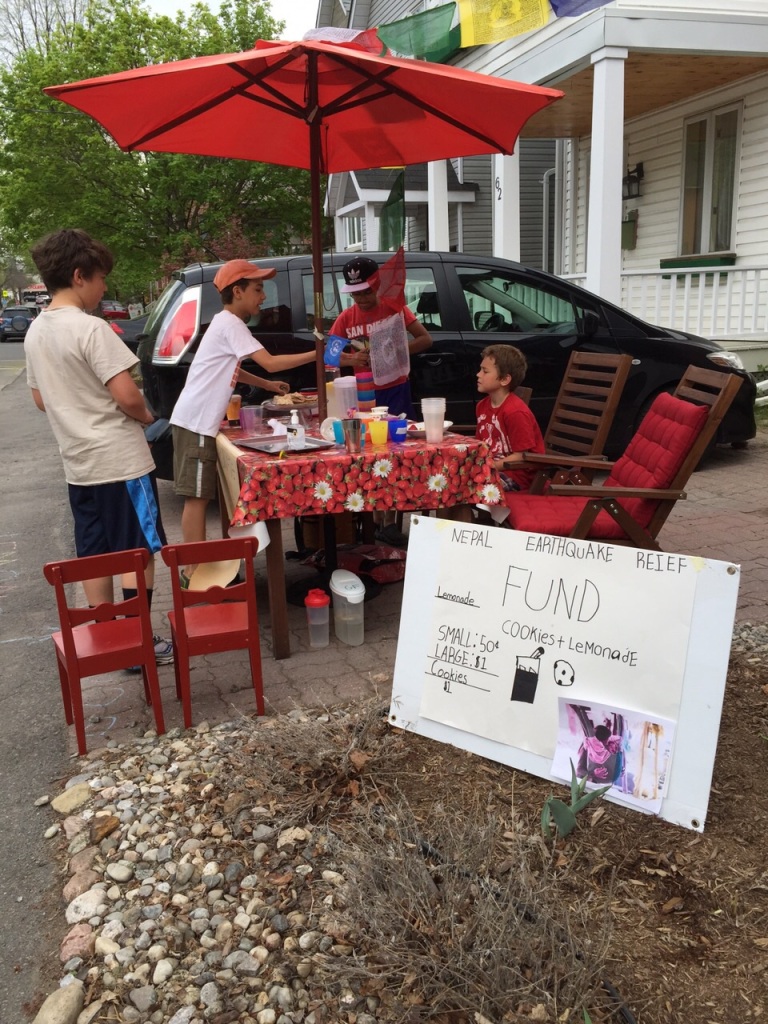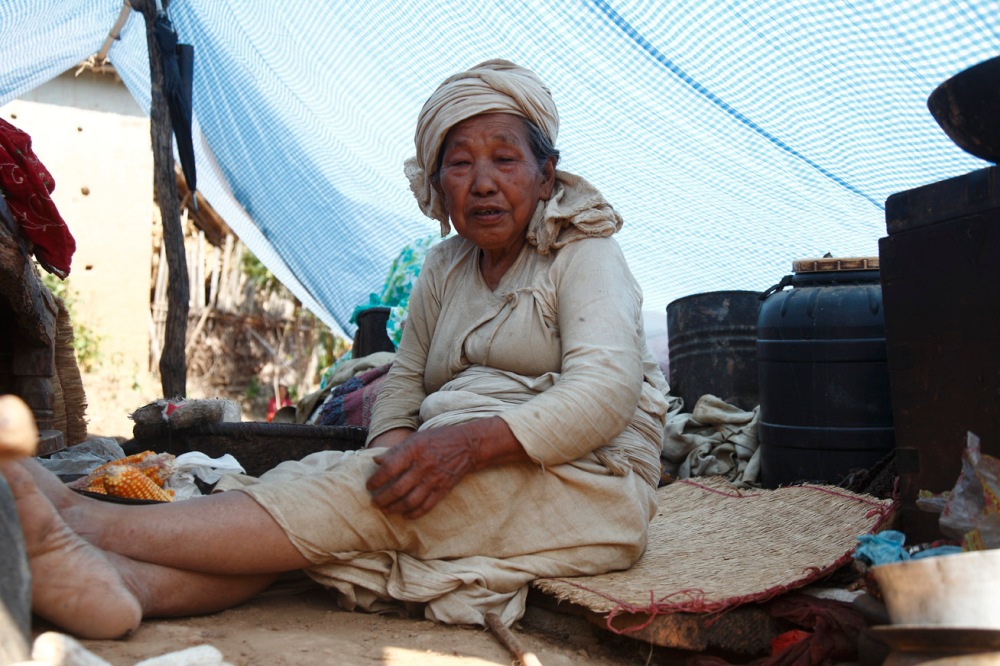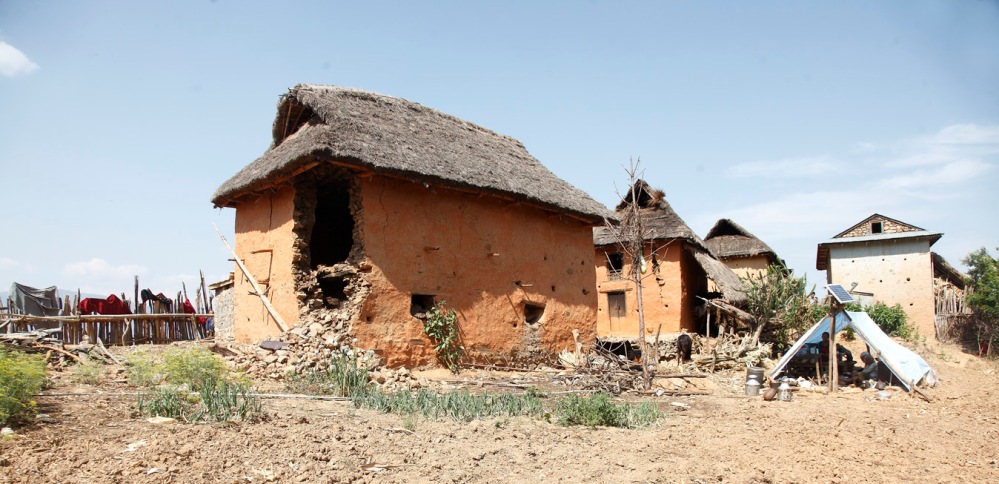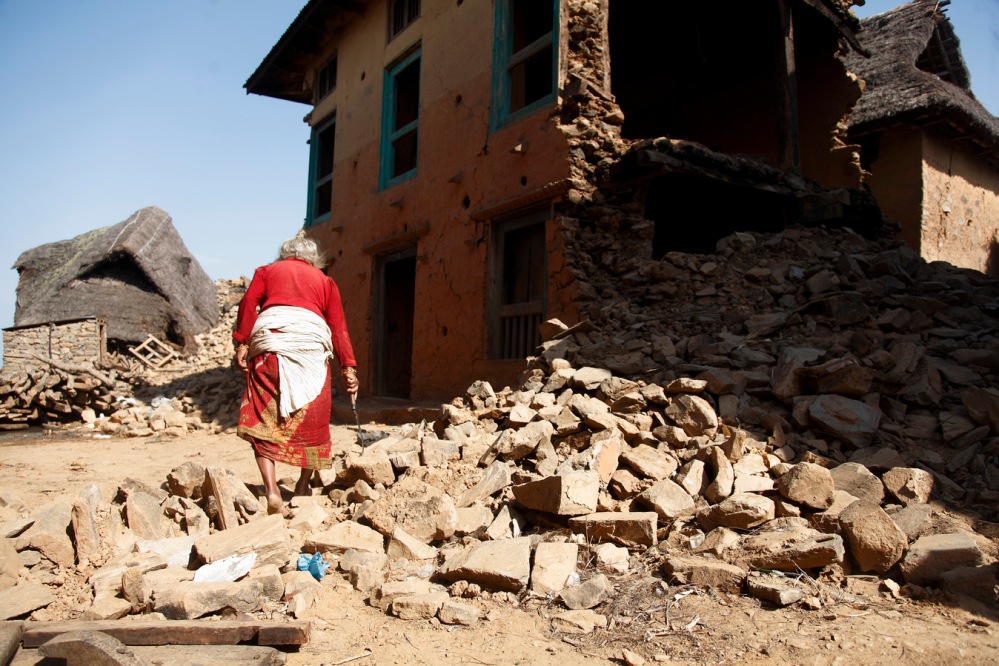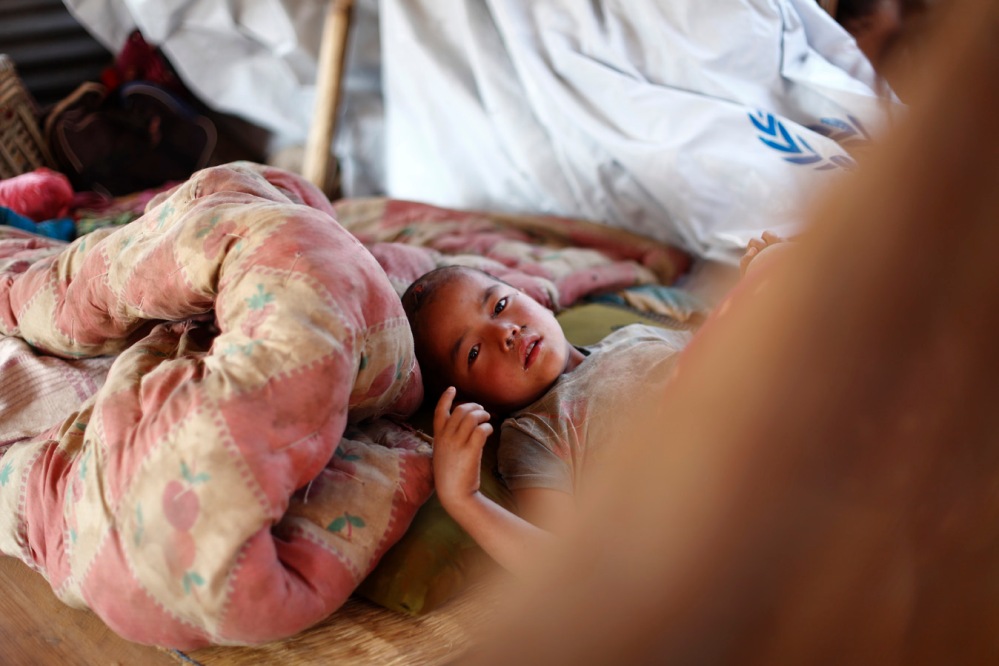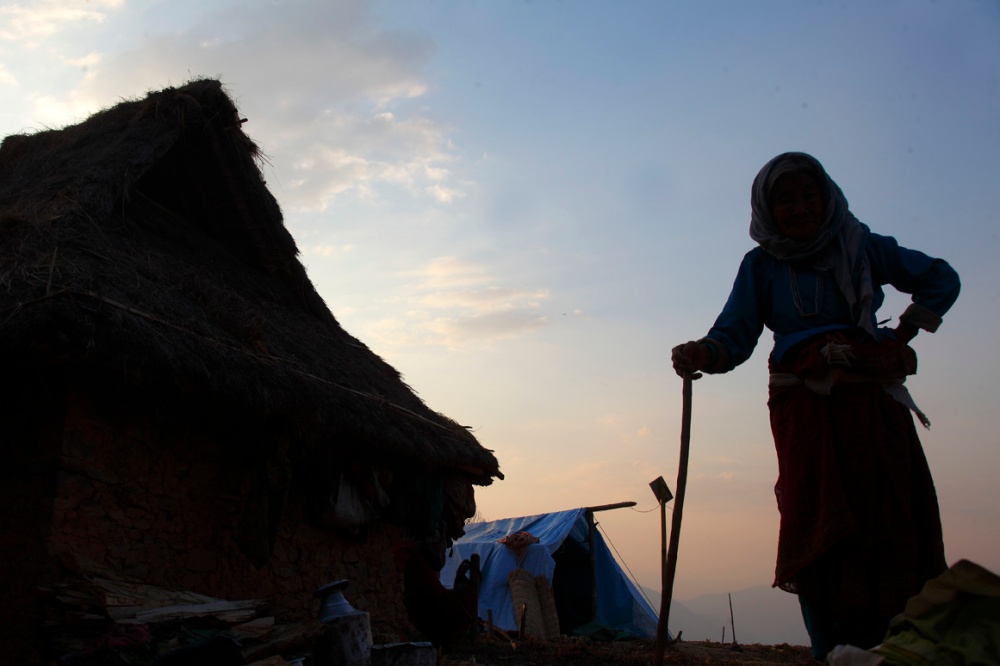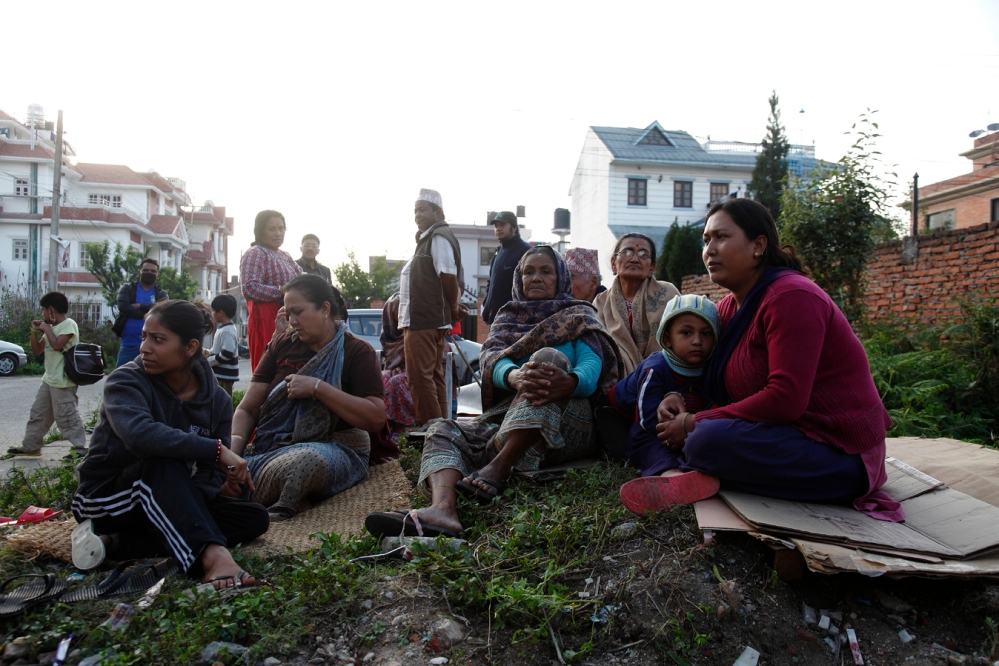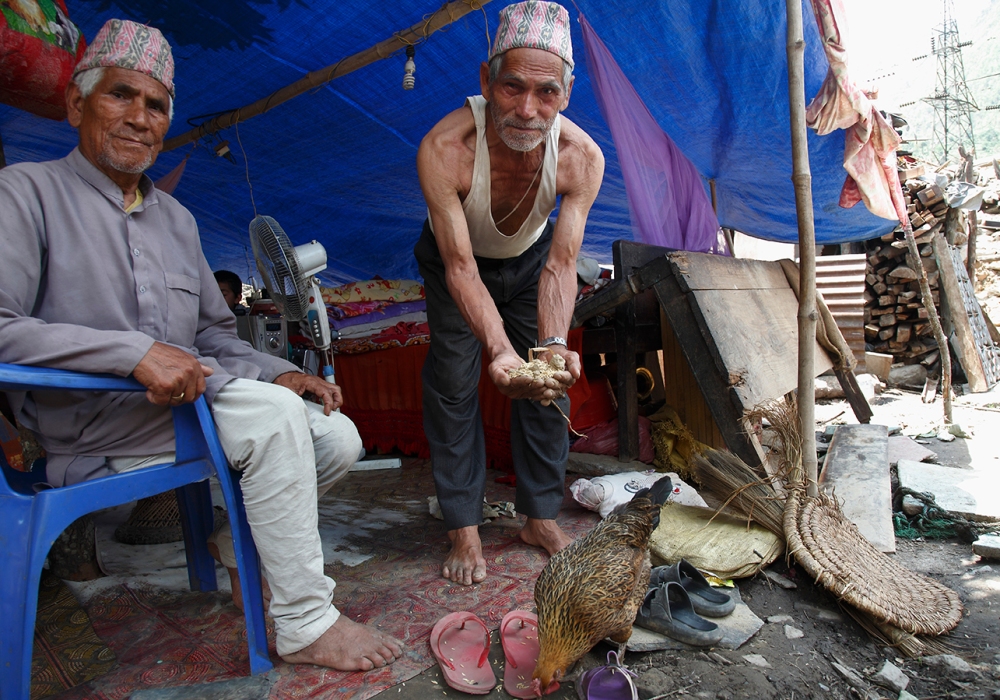
Nepal Earthquake- beyond the debris


Little hands from Ottawa make all the difference . . .
Humanitarian aid is reaching Nepal from all corners of the world. Organisations and individuals at their own level are trying to contribute their bit for Nepal.
George, Oliver, Vasu, Vani, Josh, Owen, Zari, Claire and Awa made a donation on behalf of the children of Old Ottawa South to UNICEF’S relief efforts in Nepal.
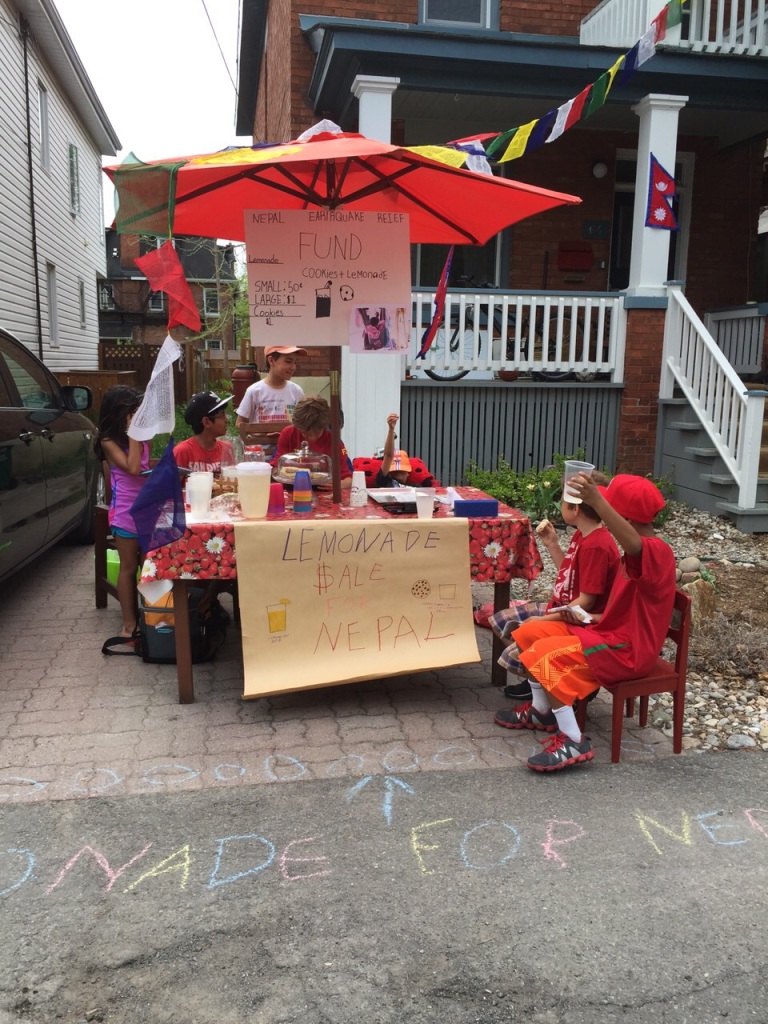
A sum of $ 204.00 was raised from the Hopewell Avenue sale. The Echo Drive sale brought in $58.00. Oliver and Claire donated their private proceeds from the Hopewell bike sale for an additional $63, giving them a grand total of $325 !!!
Since the Canadian government matches the funds, they really donated $650.
Kudos to the kids for their hard work and efforts trying to reach out and help the earthquake affected families in Nepal.
Photo courtesy – Priya Gaba

Nepal Earthquake- beyond the debris
May 5, 2015
Amma was quite happy to see me. Since the earthquake drastically turned her life 11 days ago, there were no new faces to be seen. As if the time stood still. Armed Police Force (APF) came once to her village to help people salvage their things from the damaged/collapsed houses. She was peeling corn when i entered her makeshift tent.
Quite fluent in hindi, Amma has traveled to Kolkata and few other places in India. She asked me the purpose of my visit to her village. There were no expectations from her end. I told her that i had come to spend some time in the village and she was convinced.
Eighty-year old Harimaya Pulamini is a mother of three. She lost her husband 35 days ago. All her daughters are married and well settled. Pulamini does not own any land and mainly relies on vegetables she grows in the open space outside her house. Her daughters are her only support.
She was alone in the house, the day earthquake shook her mud house. Although it did not collapse, she cannot stay there any more and is scared to go inside. For few days she spent night in the open and eventually the villagers bought a tent for her. “I have been staying in the open for long. It’s quite cold at night and my head aches. That is why i have covered my forehead”, said Harimaya Pulamini.
The villagers helped her to procure utensils and the remaining stuff from the damaged house. So far she has not received any relief material from the government except a tent. On the tenth day after the earthquake, few families in the village received tents and few were left out.
Harimaya lives in one of the settlements of Lakhinpur Ward No.9 in Sindhuli district of Nepal. The settlement is completely cut-off and is around 16 kms away from the nearest road. People take around two hours going down the mountain and three and a half hour climbing up to the village.
What is the most important thing you need right now?, I asked.
I need a shelter to cover my head, said Amma (Harimaya).
Conversation on Nepal
I was in my kitchen when the earthquake shook our three-storey building. Had just cooked food and was sitting with my son, daughter and sister. As soon as the whole house started shaking, my sixteen-year old daughter came clinging to me. My sister and my son took one corner and ducked themselves. My daughter and I headed to the other side and held ourselves to the wall.
When the quake stopped, my sister and two children went out. I was confident that i had at least one minute time before the aftershock will come. This gave me time to collect my first-aid kit, go bag, two shawls and then i left home. I was prepared to stay out as long as it required.
I was even wearing my shoes as I am a search and rescue instructor too. I though i might have to do search and rescue too.
So far there are no cracks in my house. The only damage that has happened is the front panel of my cellphone and three days after the quake, the wall clock dropped.
Omkala Khanal – NSET Social Mobiliser
May5. 2015

Nepal Earthquake – Beyond the debris
May 5, 2015
Seventy-year old Bolmaya Zorga Magar is walking towards her damaged house. She was left alone in the house when the earthquake shook the entire village on April 25, 2015. The villagers ran towards the open area but due to knee problem she managed to crawl out of the house and saved herself.
Eight-year old Dil Bahadur Rana suffered head injury from a falling stone while running for his life during the earthquake. He lives in a remote settlement area of Lakahanpur Ward No. 9 village (district Sindhuli). The villagers donot have medicines and are using local methods for cure. So far they have not received any medical aid.
Remotely located, one of the settlement of Lakahanpur Ward No. 9 village (district Sindhuli) is mostly inhabited by the elderly as younger generation have left in search of livelihood. Ten days after the earthquake, they have received little help by the authorities.
Mano Kumari Rana Magar is living in the make shift tent for past ten days that is not enough to accomodate thirty-member family.
“No one rushed out…..
25th April, 2015 Nepal Earthquake
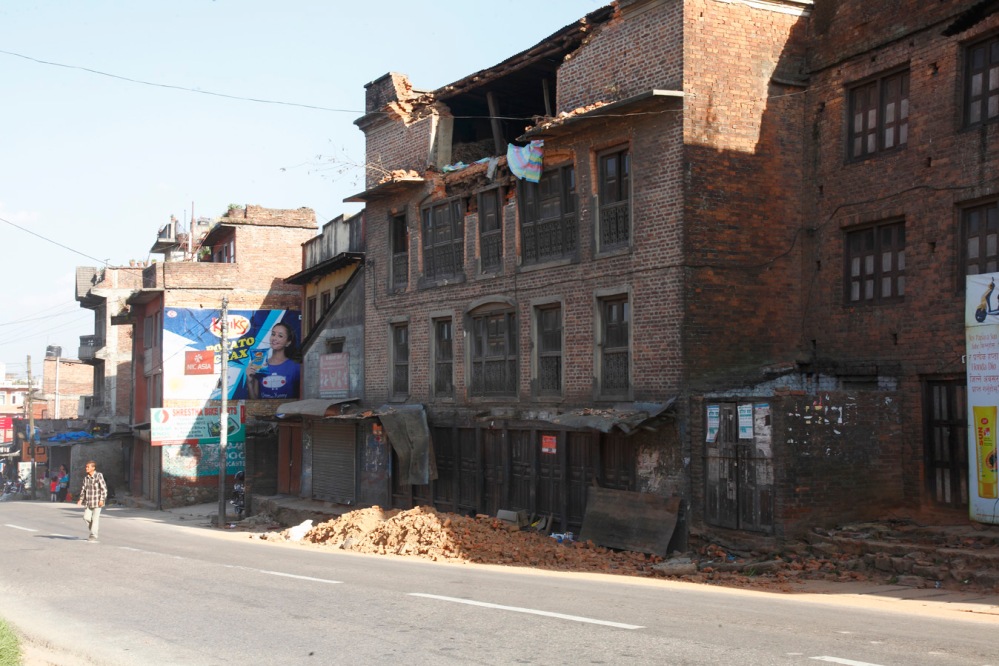
Damaged houses on the road in Thankot (district Kathmandu).
Sita Shrestha said that she was on the third floor of her house and her six-year old son was on the ground floor. As soon as her house started shaking, she immediately went to the inner wall support and waited. Her son kept crying but did not come up to her. He had been taught to stay put and duck himself. The training helped her immensely in real-time earthquake. “No one rushed out of the house including the children. This also prevented people from getting hurt. We carried our go-bags so we could attend to minor injuries around the neighborhood; there was no electricity that night and the head lamp was useful.”, said Sita.
Sixteen women from Self Help Group (SHG) of Thankot (district Kathmandu) took 5 day training in Community Based Disaster Risk Management(CBDRM) focusing on earthquake in 2013-2014 of which 14 are working effectively in the field. This included information on emergency kit (preparing a go-bag), non structural damage, search and rescue and basic preparedness training during earthquake. The women group further disseminated the information with their family members and the neighborhood.
National Society for Earthquake technology-Nepal (NSET) has been running CBDRM training programs for communities to inform the communities about disaster, prepare them and lessen the impact of disasters. They have been doing it for more than decade now and have been reaching out to communities with a missionary zeal.
A major challenge the women group faced during the earthquake was with the elderly people who refused to come out. After a lot of convincing, they agreed to come out of their homes. Sita feels that the community over the years has realized the importance of this training program and now takes them seriously.
The women group has not trained any one so far but has implemented non structural measures in few schools, government hospital in Patan and health centres. There are 1800 members in the group and they hold a monthly meeting on CBDRM issues. Namrata Shrestha feels that the training program should not be limited to SHG groups but spread in every household. NSET should involve them more in their activities and training programs.
NSET trainer, Pavitra KC, social mobiliser feels that the training has helped them in the recent earthquake. Though the women did panic at the time of earthquake, they also remembered what they had learnt and implemented in the field.

Nepal Earthquake – beyond the debris
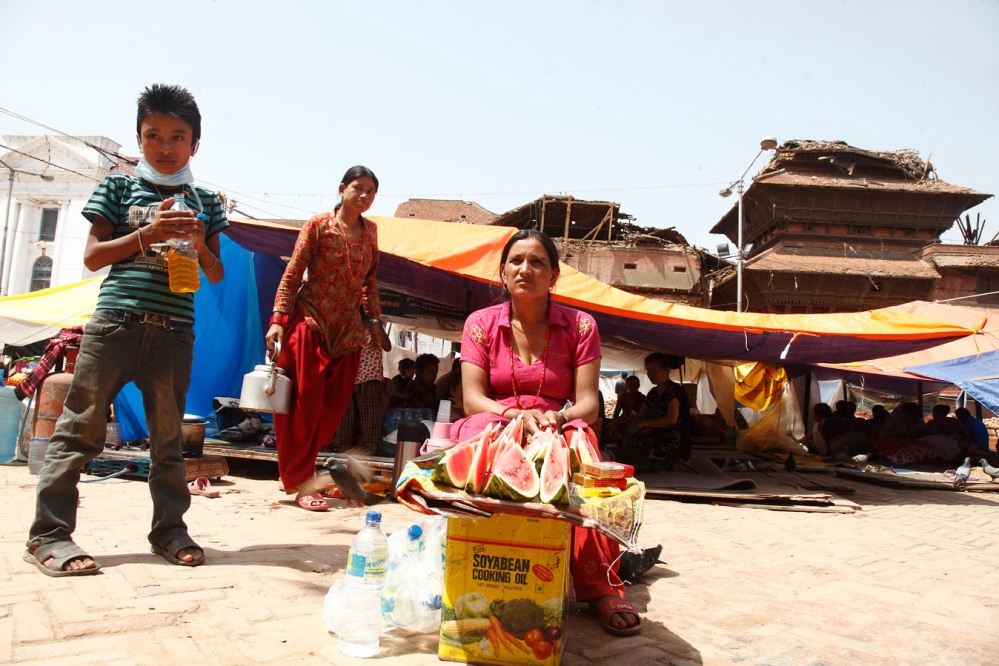 While walking around Kathmandu Durbar Square, a woman selling watermelons in front of a relief camp caught my attention. Perched on a stool in broad daylight, with the damaged heritage site in the background, she was making an effort to sell her stuff to people passing by. Most of the petty shops, small restaurants and cafes around Basantpur area are now closed due to the earthquake.
While walking around Kathmandu Durbar Square, a woman selling watermelons in front of a relief camp caught my attention. Perched on a stool in broad daylight, with the damaged heritage site in the background, she was making an effort to sell her stuff to people passing by. Most of the petty shops, small restaurants and cafes around Basantpur area are now closed due to the earthquake.
Thirty-year old Jatna Khadga is originally from Dolakha village, Ward No. 9. She belongs to Ladukha community. Along with her husband and three children, Jatna came to Kathmandu 2 years ago. She has been living in Basantpur and selling tea to the people visiting Kathmandu Durbar Square.
Jatna was on the third floor of her rented room on April 25 when a 7.8 magnitude earthquake shook the entire building, She immediately rushed down with just Rs 200 in her pocket. “There were cracks the first time and the entire building collapsed when the quake hit again the second time”, said Jatna. Fortunately her children were playing outside and were saved, so was her husband. She lost everything in the earthquake and is now selling water bottles, watermelon and cigarettes. ‘I bought this stuff with the money i had in my pocket. It’s difficult make a sale here and we do not make any profit, just Rs 40-50 everyday . . . ‘
Although relying on the relief, Jatna is still making an effort to start afresh. She is living with two families in the relief camp near Kathmandu Durbar Square. “I want to go home but . . . there is nothing left in the village. I am not sure if we will be getting compensation for our rented room or for our home in Dolakha. For now its a struggle and we are trying to fight it out.”, said Jatna.
Nepal Earthquake – beyond the debris
April 30, 2015
“We do not know where we will be sleeping tonight as our tent is stolen. We are still afraid to go to our house at night. Although we are anticipating tough time, we are all in this together “, says thirty year old Sufi. Five days after the earthquake in Nepal, many families from Sainbu Bhainsepati, (district Lalitpur) are sleeping outside in the tents.
According to UN Office of the Resident Coordinator in Nepal (as of 29th April, 2015), 75,000 estimated number of people are in Kathmandu Valley Camp sites.
Photo- Sarika Gulati
Grateful to NSET for all the ground support (http://nset.org.np/nset2012/)
